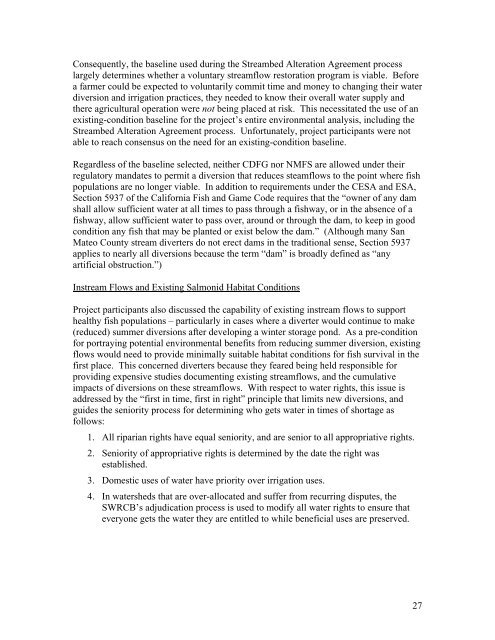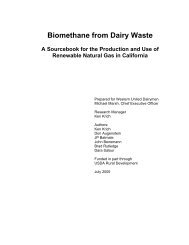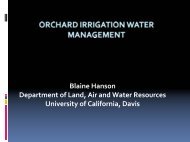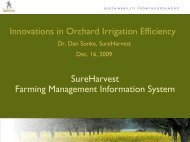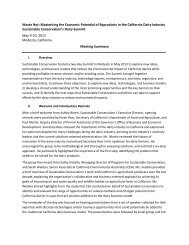THE PONDS PROJECT - Sustainable Conservation
THE PONDS PROJECT - Sustainable Conservation
THE PONDS PROJECT - Sustainable Conservation
You also want an ePaper? Increase the reach of your titles
YUMPU automatically turns print PDFs into web optimized ePapers that Google loves.
Consequently, the baseline used during the Streambed Alteration Agreement process<br />
largely determines whether a voluntary streamflow restoration program is viable. Before<br />
a farmer could be expected to voluntarily commit time and money to changing their water<br />
diversion and irrigation practices, they needed to know their overall water supply and<br />
there agricultural operation were not being placed at risk. This necessitated the use of an<br />
existing-condition baseline for the project’s entire environmental analysis, including the<br />
Streambed Alteration Agreement process. Unfortunately, project participants were not<br />
able to reach consensus on the need for an existing-condition baseline.<br />
Regardless of the baseline selected, neither CDFG nor NMFS are allowed under their<br />
regulatory mandates to permit a diversion that reduces steamflows to the point where fish<br />
populations are no longer viable. In addition to requirements under the CESA and ESA,<br />
Section 5937 of the California Fish and Game Code requires that the “owner of any dam<br />
shall allow sufficient water at all times to pass through a fishway, or in the absence of a<br />
fishway, allow sufficient water to pass over, around or through the dam, to keep in good<br />
condition any fish that may be planted or exist below the dam.” (Although many San<br />
Mateo County stream diverters do not erect dams in the traditional sense, Section 5937<br />
applies to nearly all diversions because the term “dam” is broadly defined as “any<br />
artificial obstruction.”)<br />
Instream Flows and Existing Salmonid Habitat Conditions<br />
Project participants also discussed the capability of existing instream flows to support<br />
healthy fish populations – particularly in cases where a diverter would continue to make<br />
(reduced) summer diversions after developing a winter storage pond. As a pre-condition<br />
for portraying potential environmental benefits from reducing summer diversion, existing<br />
flows would need to provide minimally suitable habitat conditions for fish survival in the<br />
first place. This concerned diverters because they feared being held responsible for<br />
providing expensive studies documenting existing streamflows, and the cumulative<br />
impacts of diversions on these streamflows. With respect to water rights, this issue is<br />
addressed by the “first in time, first in right” principle that limits new diversions, and<br />
guides the seniority process for determining who gets water in times of shortage as<br />
follows:<br />
1. All riparian rights have equal seniority, and are senior to all appropriative rights.<br />
2. Seniority of appropriative rights is determined by the date the right was<br />
established.<br />
3. Domestic uses of water have priority over irrigation uses.<br />
4. In watersheds that are over-allocated and suffer from recurring disputes, the<br />
SWRCB’s adjudication process is used to modify all water rights to ensure that<br />
everyone gets the water they are entitled to while beneficial uses are preserved.<br />
27


